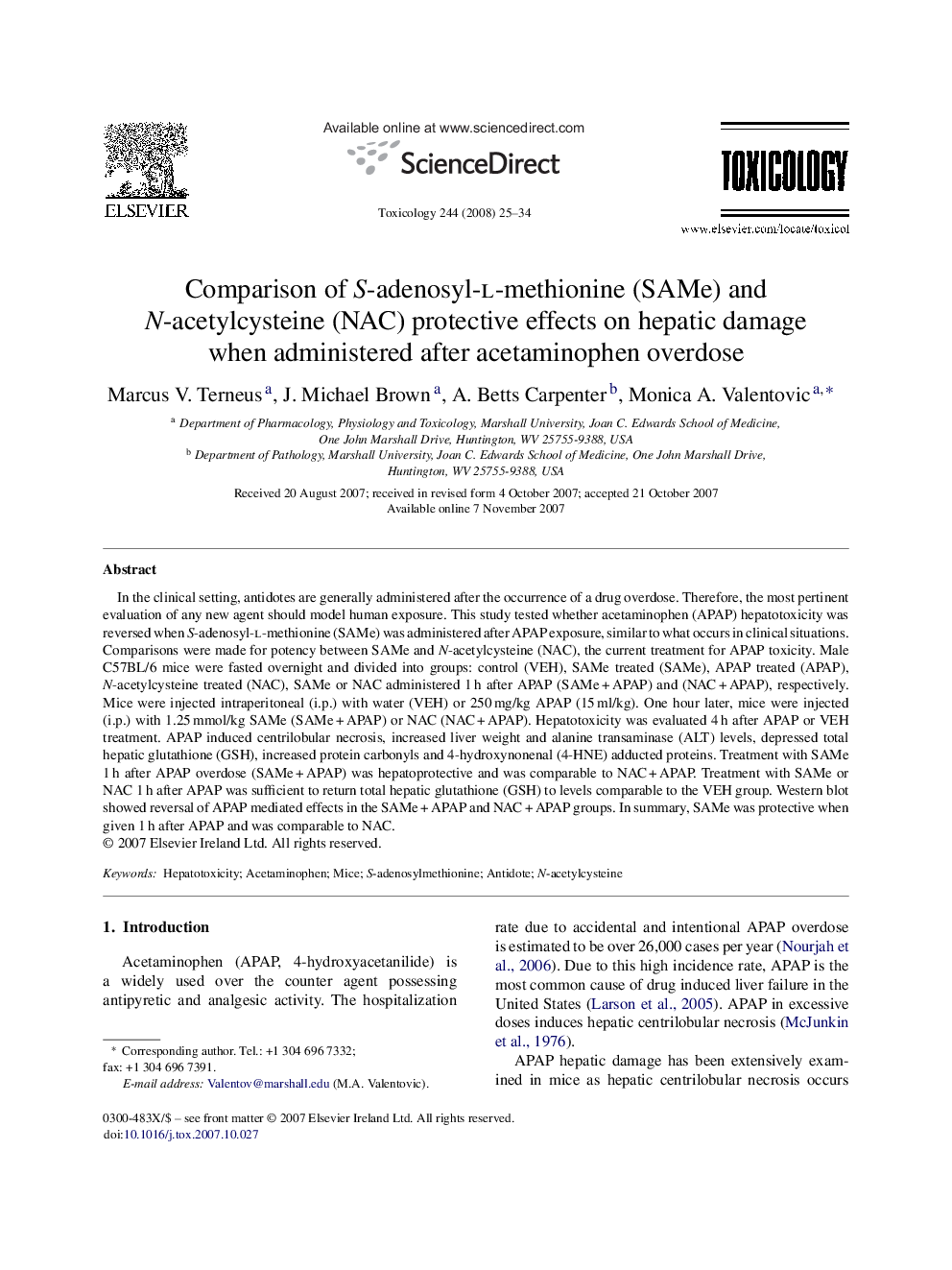| Article ID | Journal | Published Year | Pages | File Type |
|---|---|---|---|---|
| 2597005 | Toxicology | 2008 | 10 Pages |
In the clinical setting, antidotes are generally administered after the occurrence of a drug overdose. Therefore, the most pertinent evaluation of any new agent should model human exposure. This study tested whether acetaminophen (APAP) hepatotoxicity was reversed when S-adenosyl-l-methionine (SAMe) was administered after APAP exposure, similar to what occurs in clinical situations. Comparisons were made for potency between SAMe and N-acetylcysteine (NAC), the current treatment for APAP toxicity. Male C57BL/6 mice were fasted overnight and divided into groups: control (VEH), SAMe treated (SAMe), APAP treated (APAP), N-acetylcysteine treated (NAC), SAMe or NAC administered 1 h after APAP (SAMe + APAP) and (NAC + APAP), respectively. Mice were injected intraperitoneal (i.p.) with water (VEH) or 250 mg/kg APAP (15 ml/kg). One hour later, mice were injected (i.p.) with 1.25 mmol/kg SAMe (SAMe + APAP) or NAC (NAC + APAP). Hepatotoxicity was evaluated 4 h after APAP or VEH treatment. APAP induced centrilobular necrosis, increased liver weight and alanine transaminase (ALT) levels, depressed total hepatic glutathione (GSH), increased protein carbonyls and 4-hydroxynonenal (4-HNE) adducted proteins. Treatment with SAMe 1 h after APAP overdose (SAMe + APAP) was hepatoprotective and was comparable to NAC + APAP. Treatment with SAMe or NAC 1 h after APAP was sufficient to return total hepatic glutathione (GSH) to levels comparable to the VEH group. Western blot showed reversal of APAP mediated effects in the SAMe + APAP and NAC + APAP groups. In summary, SAMe was protective when given 1 h after APAP and was comparable to NAC.
